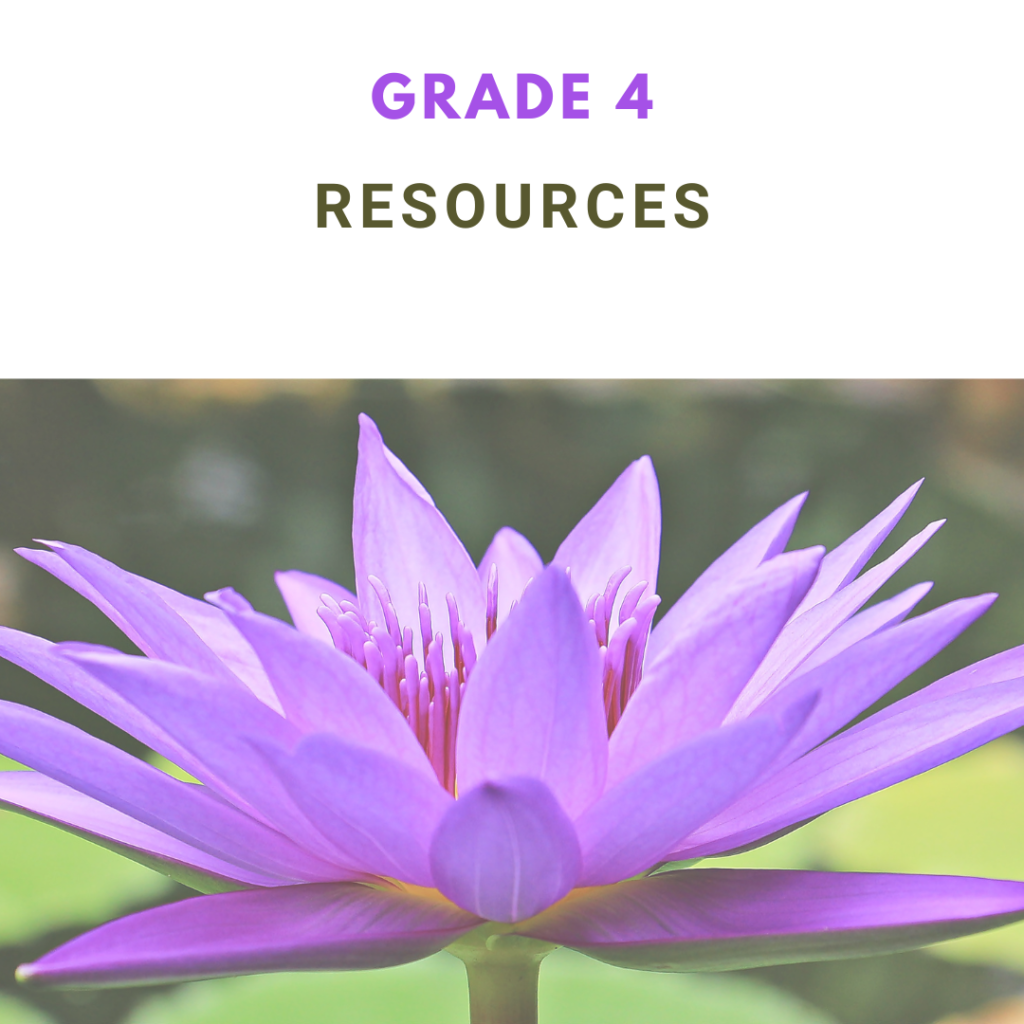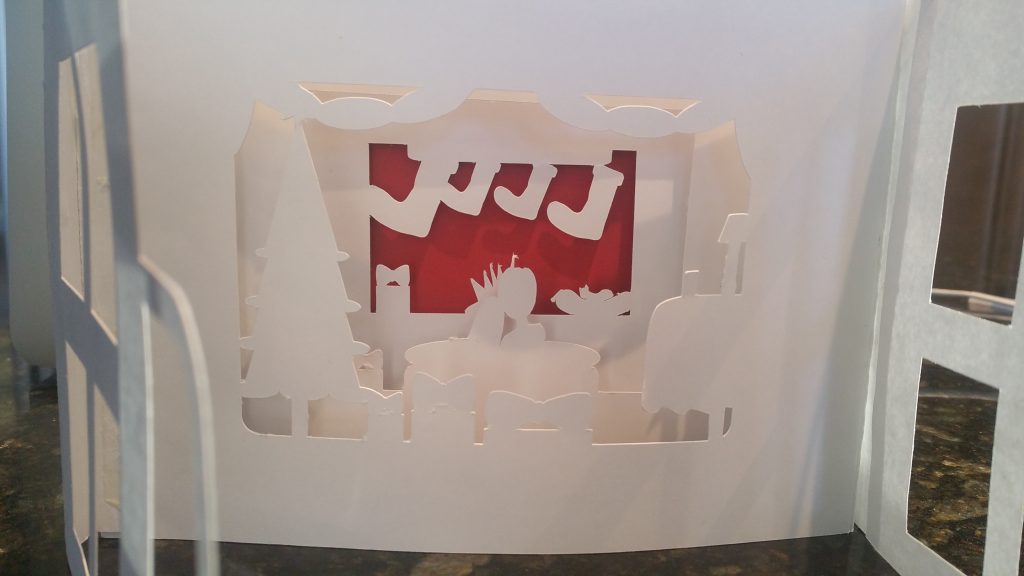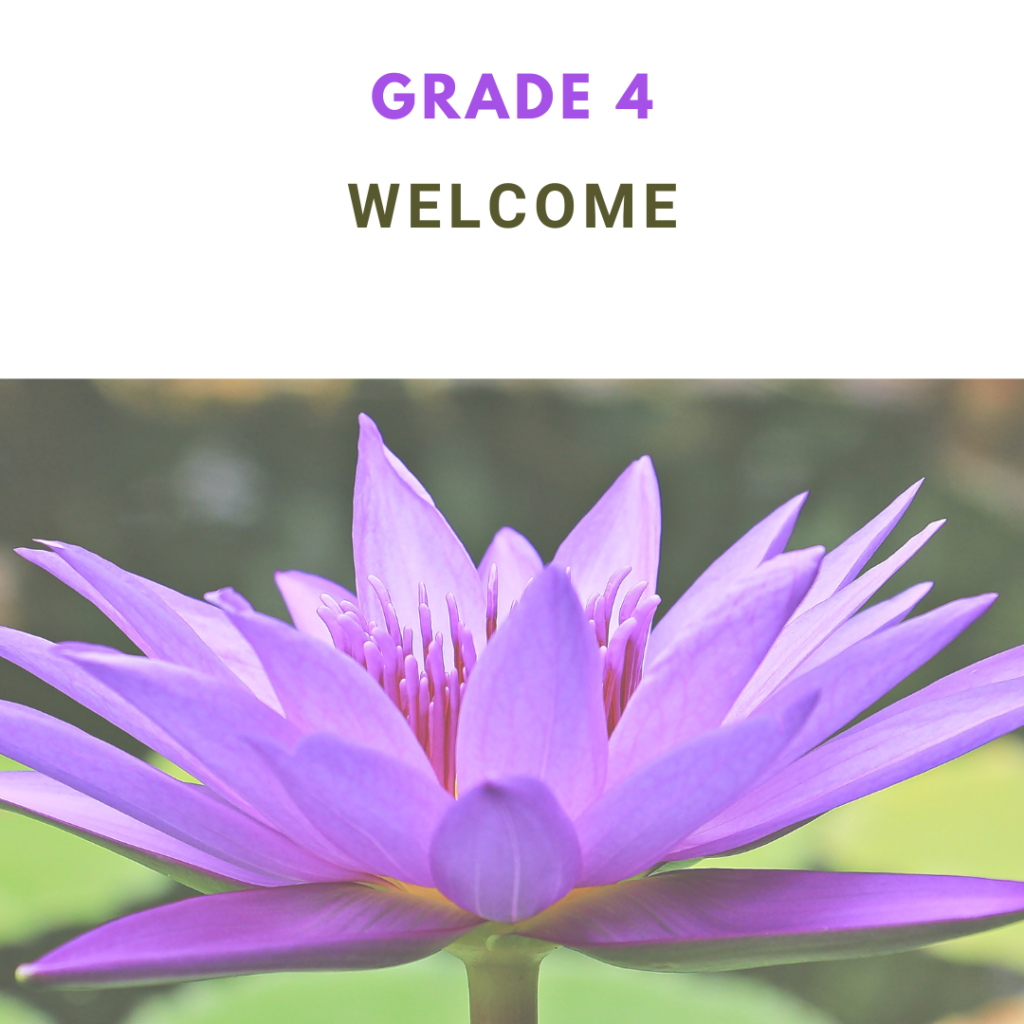
Introducing The Principal Theme
Welcome to the first set of lessons for Grade 4. These lessons seek to expand our understanding that, in the incomparable figure of Bahá’u’lláh, God has revealed to humanity His greatest Name, the All-Glorious.
It is amazing to be alive at this moment in history, in this promised Day of God, when He Who is the King of Kings, the Glory of God, has been made manifest.
This first lesson is intended, above all, to uplift our hearts and to make us aware that, in every corner of the globe, the life and teachings of Bahá’u’lláh are the cause of celebration; everywhere people are raising their voices in praise of Him and joining hands to build the peaceful and united world He envisions.
To set the scene for the ensuing discussions, let us review what we have learned in the third grade.
Can you name some of the Manifestations of God that have brought the light of His knowledge to the peoples of the world down the ages?
You have already learned that the Manifestations of God are very special Beings Who come from time to time to guide humanity along the right path. They reflect the attributes of God as a mirror reflects the light of the sun. You have also learned that the Bab was a Manifestation of God who prepared the way for the coming of Baha’u’llah. Baha’u’llah is the Manifestation of God for today, which means that, by knowing Him, we are able to gain knowledge of God and that, by obeying Him, we live in accordance with the Will of God.
Humanity is like a child who needs to be educated. When a child has learned all that there is to learn in one grade, he must move on to the next. In this new grade, he will have another teacher, as wonderful as the previous one, who will teach him what he could not have understood before. If a child is too attached to the old teacher and decides to reject the new one, he will never progress. In the same way, when a Manifestation of God appears on earth, it is the duty of the followers of all earlier Manifestations to accept Him and learn to live according to His teachings. You already know that we live in a special Day, the beginning of a New Era in the long history of the human race. Baha’u’llah is the Manifestation of God that teaches us how we are to live in this Age. It is now the duty of the followers of every religion to investigate the claims of Baha’u’llah, recognize Him, and follow Him, as He is the new Teacher spoken about for thousands of years Whose teachings will enable us to build the promised Kingdom of God on earth- a peaceful and prosperous world civilization based on the principles He has brought to humanity.
Every one of God’s Manifestations has spoken of a time when humanity would forever lay down its weapons and learn to live in peace and happiness. For centuries, people everywhere have anxiously awaited the promised Day of God. We are fortunate to know that this new Day has dawned. God’s promise to humanity has been fulfilled by Bahá’u’lláh, and people from every race, religion, and nationality are uniting around His vision of humanity as one family. His teachings show us how to replace estrangement with loving fellowship, tyranny with justice, conflict and contention with peace and tranquility. Although we have heard many accounts related to Bahá’u’lláh in the past, now in Grade 4, we will learn the story of His life and much more about His Revelation.
But before we begin our lessons on His life, let us go back only a few years to 2017. Does anyone know what special anniversary took place that year? It was the two hundredth anniversary of the Birth of Bahá’u’lláh, and all over the world, in every land, people celebrated His life and teachings. I am going to share with you a map that shows all the countries in the world where celebrations were held, and you will see a few photographs from different events. Then I will tell you some stories about these festivities.
In this lesson, you are also going to memorize a quotation in which Bahá’u’lláh declares that the promised Day of God has come and that the sun of His bounty is shining resplendent for all to see. And we know that soon, as more and more people begin to follow His teachings and work together side by side, God’s Kingdom will be established on earth. Bahá’u’lláh is the King of Glory.
- Why do the Manifestations of God come to humanity from time to time?
- How can we live in accordance with the Will of God?
- Can you mention the names of some of the Manifestations of God that came before The Bab and Baha’u’llah?
- What should the people of the world do now that a new Manifestation of God has come to guide them?
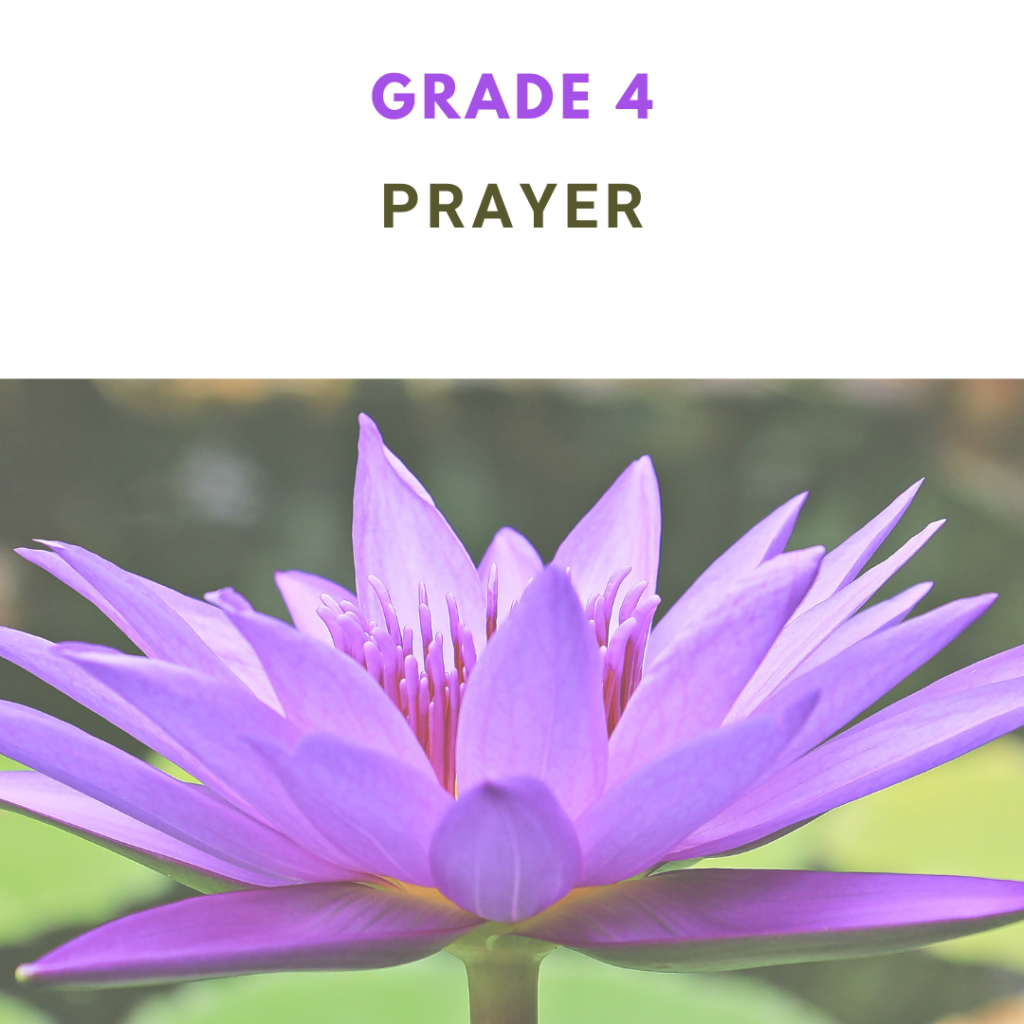
There will be 3 prayers to memorize for lessons 1 to 4. All will be listed, but it is recommended to choose one at a time and learn over the next 4 lessons.
Memorization Aids:
Prayer 1
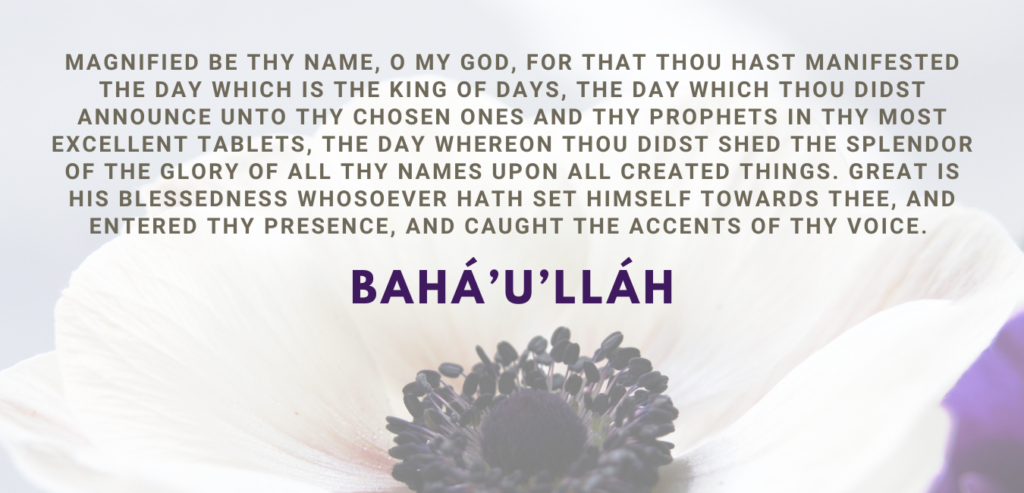
Prayer 2
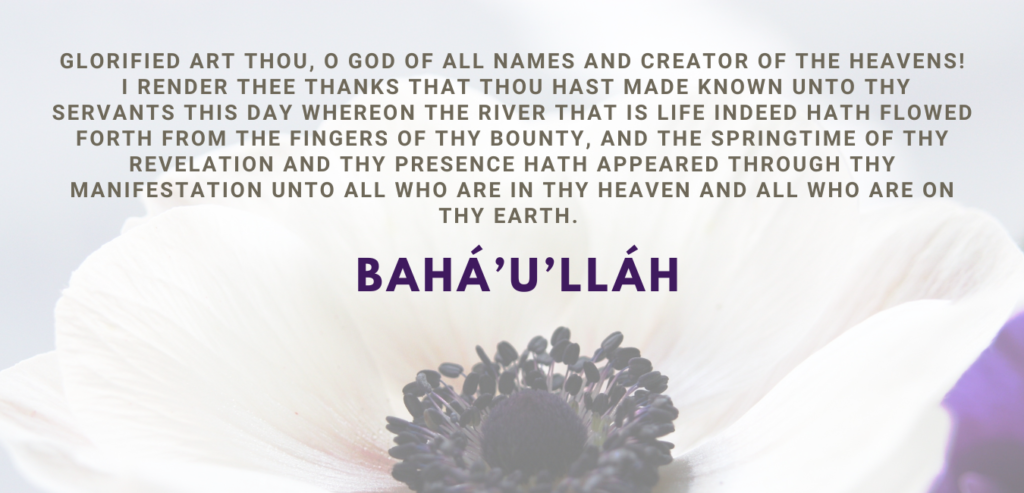
Prayer 3
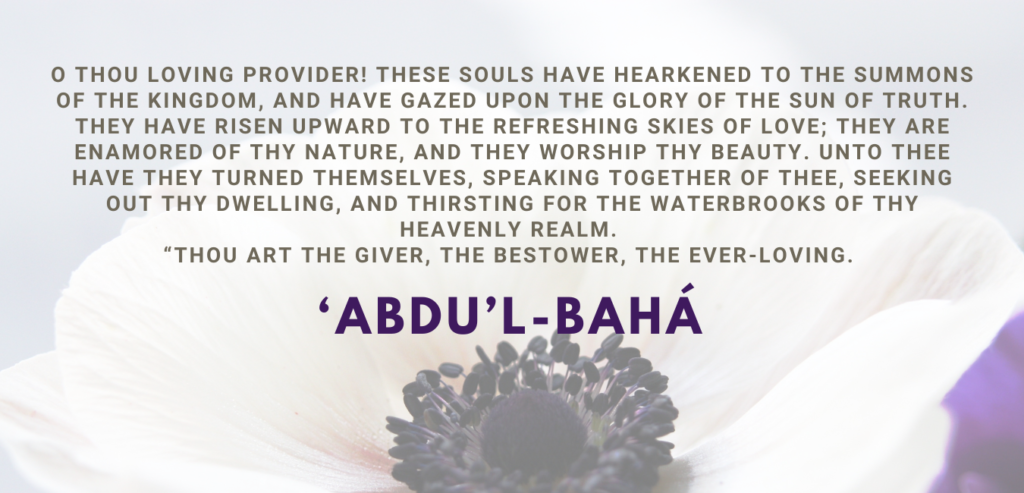
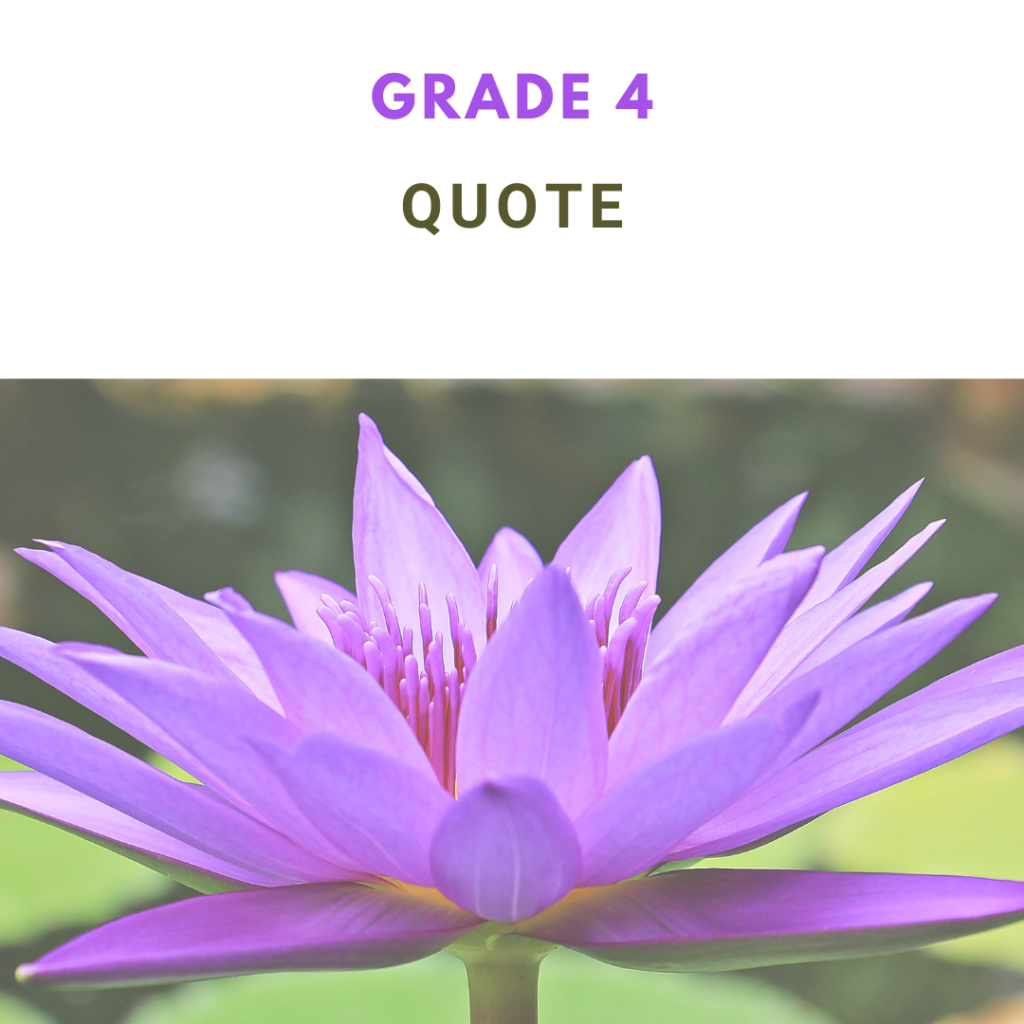
The promised Day of God is come! He Who is the Manifestation of the Adored One hath been established upon the throne of His name, the All-Loving, and the sun of His bounty hath cast its rays upon the seeing and seen alike.
BAHÁ’U’LLÁH
Meaning Of Words
Want to know the meaning of the words in the quote? Look them up and record them here. Keep it safe in your notebook!
SEND A POSTCARD
Send to a friend or neighbor. Use email, snail mail, or hand-deliver!
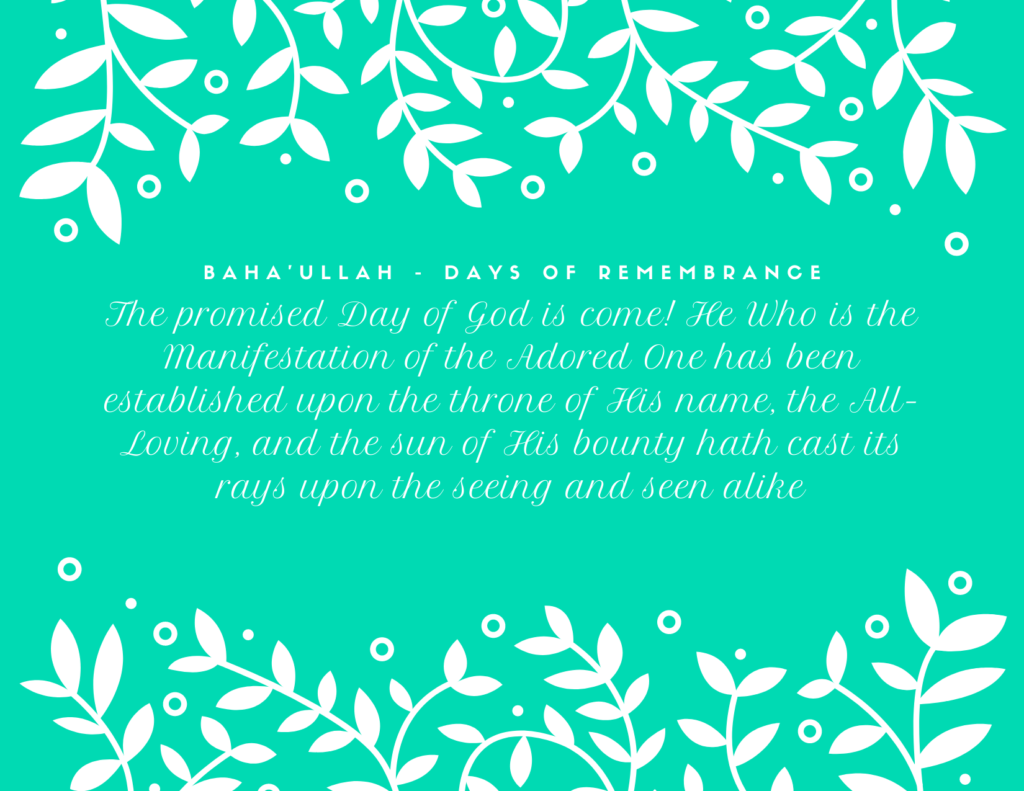
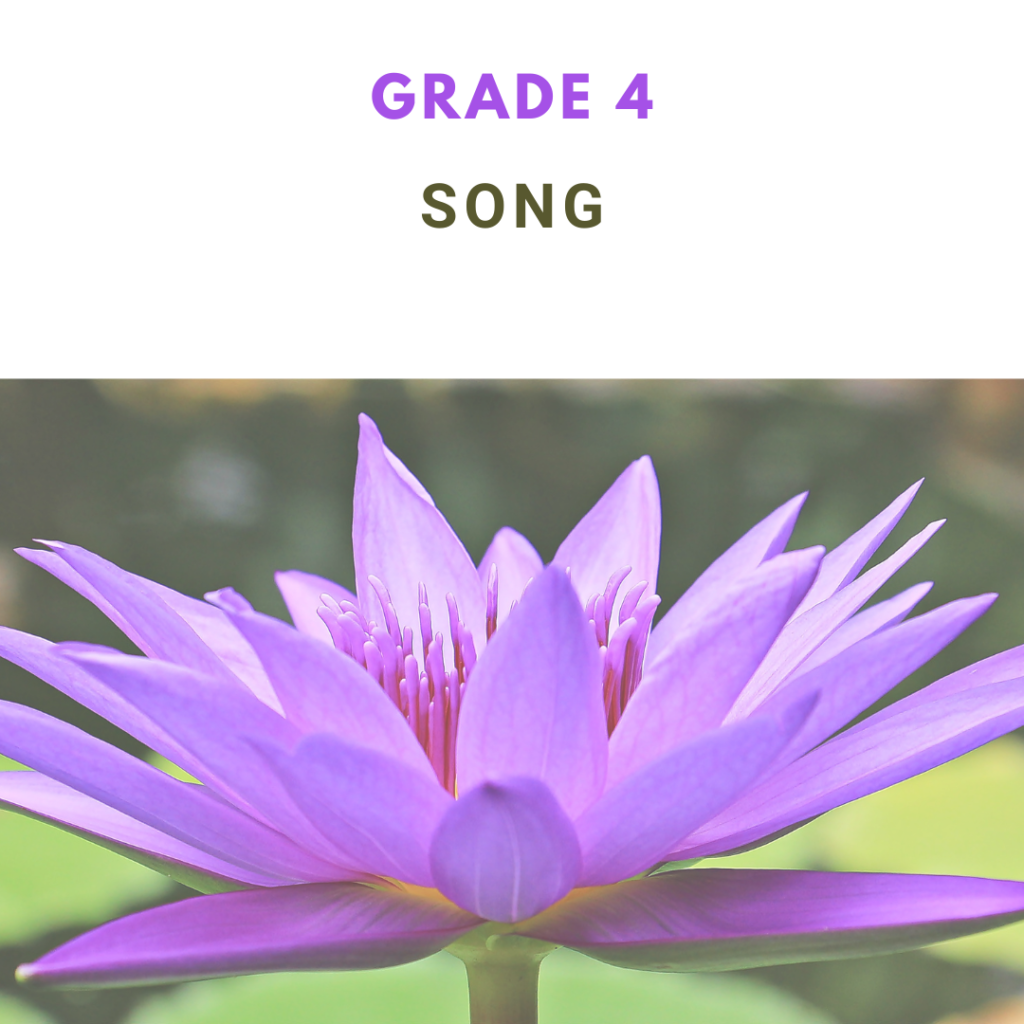
Siyah Chal
Bahá’u’lláh
Creadell Haley – Baha’u’llah
The Ancient Beauty – Titles of Bahá’u’lláh
Prince of Peace
Who Is the Prophet
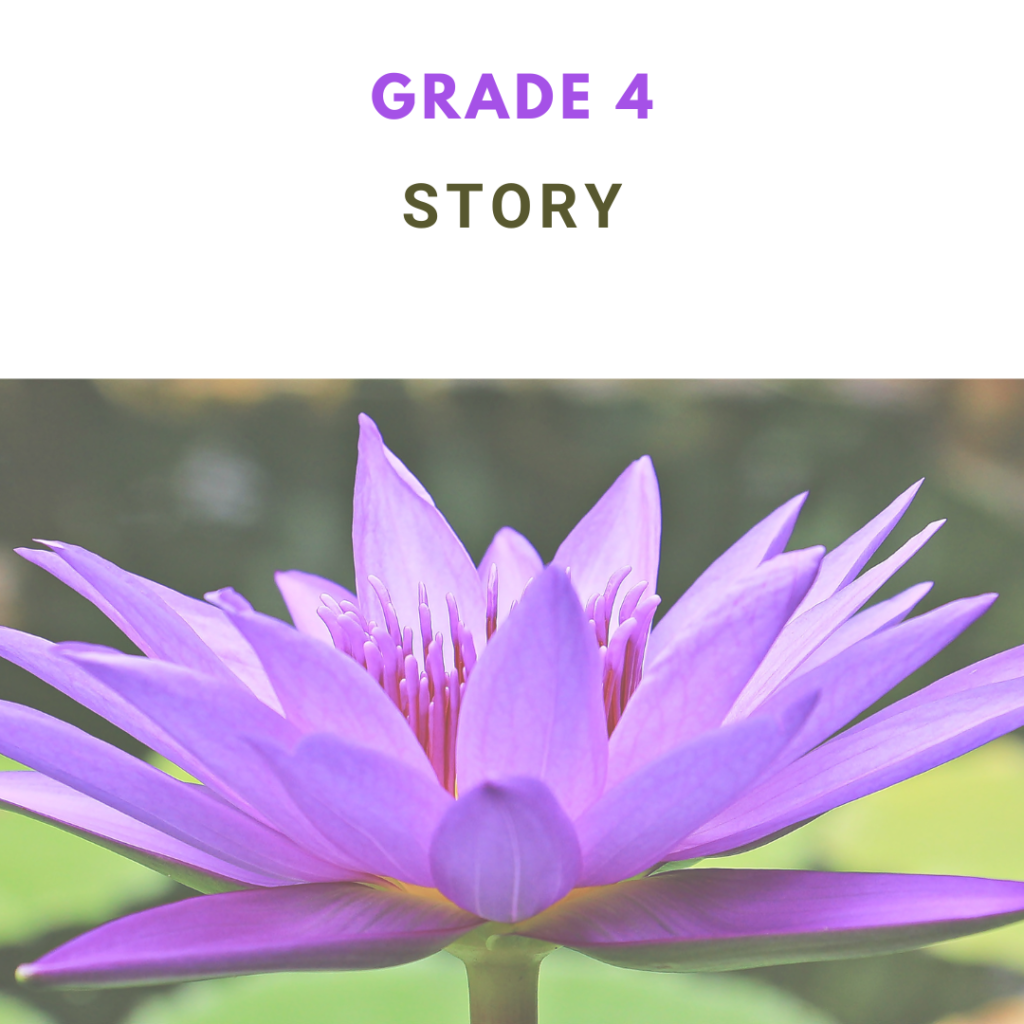
Photos of Celebration From Around The World
Vignette 1
In the rural parts of India, whenever there is a special celebration, homes are decorated with “rangoli”. Rangoli are large, colorful designs created on the floor or ground, using petals from flowers, colored rice and sand, and sometimes dry flour. Usually, the mother and daughters will rise early in the morning, clear the space for the rangoli, outline the design with chalk, and then fill it in with the petals and colored rice and sand they have prepared.
Now, in the Indian state of Chhattisgarh, there is a small village of about one thousand people, and to celebrate the two hundredth anniversary of the Birth of Bahá’u’lláh, many families decorated the ground in front of their homes with rangoli. Can you imagine how beautiful the village looked as the festivities were approaching?
In preparation for the celebration, fifty-five people fasted as a sign of their love for Bahá’u’lláh. When one fast, one stops eating for a period of time so that, instead of thinking about the things of this world, one’s thoughts are focused on the spiritual. Then, as nightfall came, lamps were lit in front of almost all of the homes, and a group of youth went through the streets of the village, playing drums and inviting everyone to the celebration.
At 8:00 in the evening, the festivities began. Prayers were chanted, songs were sung, skits were performed, and presentations were given. The youth arose and spoke of Bahá’u’lláh and His teachings. So joyful were the festivities that they continued into the early morning hours of the next day. But the celebrations were not yet over. The villagers organized a series of prayer meetings for the next two days. Some eighty homes were opened for this purpose, and around four hundred people altogether gathered in prayer during those two days, to offer their gratitude to Bahá’u’lláh and ask for His continued guidance and blessings.
Vignette 2
In one town in Turkey, the friends spent weeks preparing to celebrate the two hundredth anniversary of the Birth of Bahá’u’lláh. They rented a theatre hall for the occasion, sent out invitations, and prepared a program that included a presentation on His life and teachings. There were even posters about the event. Now, a week before the celebration, one of the organizers received a telephone call. It was a woman who had gone to the theatre hall for the gathering only to find out no one was there. She had learned about the Blessed Beauty, Bahá’u’lláh, she said, five years earlier. Every day since, she explained, she remembered Him in her prayers. She was so excited to be able to participate in the celebration of His Birth that she had mixed up the dates and had come to the event one week early!
Vignette 3
In Tanzania, more than 13,000 people participated in festivities, held in some ninety places all around the country, to celebrate the Birth of Bahá’u’lláh. Try to imagine what kind of preparations were needed. Work had to begin weeks and weeks in advance, and of course, at every step, the friends received divine confirmation. Here are accounts from two communities.
A few families from a village near Lake Victoria realized that the community would need more money in order to carry out its plans. It had organized two days of activities and expected many guests from other villages, who would need to be fed and offered a place to stay. The community also wanted to rent a screen on which to show a most beautiful film about Bahá’u’lláh called “Light to the World”. So what did these families do? They decided that, since they lived near a lake, they would raise ducks and then sell them when the market was good. Thankfully, the number of ducks multiplied, and a month before the celebrations they were sold. Together with other contributions received, the community had all the funds it needed to take care of its many guests.
Vignette 4
In the capital city of Dominica, a beautiful island in the Caribbean, a group of youth painted lovely murals on the outside walls of the Bahá’í Center as a gift for the bicentenary celebrations. The community rallied around the project, with many people donating supplies such as paint. The building had not been repaired for several years, and since the youth began by scraping off the old paint, they decided they would also strengthen the foundation of some of the walls with stones collected from the ocean. And that was most fortunate, for, a few weeks before the celebrations were to begin, a strong hurricane tore through the island, and many people sought shelter in the Center. When the storm was over, they saw that the Center was one of the few buildings left standing, and it became a place of refuge for those who were homeless and a hub of activity as work began to rebuild the island.
Vignette 5
On the occasion of the bicentenary of the Birth of Bahá’u’lláh, the Universal House of Justice wrote a most beautiful message addressed to all those who celebrate the Glory of God. You know, of course, that Glory of God refers to Bahá’u’lláh. In the message, the House of Justice states clearly that Bahá’u’lláh is God’s Manifestation for today and that He has given us the teachings we need to bring about peace and live in unity. It invites people everywhere to participate in building a better world.
Now, in many places, the message was read and studied when people gathered to celebrate Bahá’u’lláh’s Birth. One such meeting took place in a town in Uganda. A large hall was selected for this purpose, and many local leaders, including religious leaders, attended. There was much chatting among the participants, and the hall was filled with noise, until the message started to be read aloud. Then everyone fell silent, as they listened to the words of the House of Justice. The message captured their attention completely. At the end, some of the local leaders asked the Bahá’í friends to give them copies so that they could study the message again later themselves. Even one of the religious leaders decided that the members of his church should read it. “It is the duty of all people to respond to the call of Bahá’u’lláh,” said one leader who, before the bicentenary events, knew very little about the Bahá’í Faith.
Vignette 6
Jamundí is a town located in the southwestern region of Colombia. Some thirteen gatherings, attended by more than 1,600 people, were held throughout the town to celebrate the bicentenary of the Birth of Bahá’u’lláh. One of these was carried out by students and teachers at the Simmons Bahá’í School, which, for many years, has offered primary and secondary education, as well as a kindergarten program, to young people in the town.
Now, just before families and friends were set to arrive, a dark cloud formed in the sky, and a strong storm moved in, flooding the streets. With great concern, the children and teachers waited for their guests, but the rain was not stopping. Suddenly, a stream of people started arriving, all in wet clothes. The venue was filled to capacity, and the program began.
Lights lit up the room, and children intoned prayers and quotations by heart. The sweetness with which they raised their voices to recite the words of the Blessed Beauty touched the hearts of those present. But the most special moment was yet to arrive. The narration of the story of the life of Bahá’u’lláh was under the care of a group of children in fifth grade. Little by little, and with astonishing confidence, each child took a step forward and narrated a small fragment of the life of this Divine Educator. “Bahá’u’lláh, the Manifestation of God for this Age, was born in Ṭihrán, in a faraway country called Iran,” noted the first. With a firm step, a little girl moved towards the microphone to add, “Ever since He was young, Bahá’u’lláh displayed extraordinary signs and qualities for a child His age.” The next one made reference to the dream that Bahá’u’lláh’s father had, in which his Son appeared to be swimming in a great ocean, and from each string of His hair a fish was attached. “The multitude of fish followed Him without being able to hurt him,” concluded the boy. The most moving moment was when the smallest child spoke about the sufferings of Bahá’u’lláh. He stood in front of the microphone and kept quiet for a moment. “I don’t know why they hurt Him so much when He was such a good person,” said the little boy with a quivering voice, which made it difficult for him to continue. At that moment, his teacher stepped towards him and embraced him tenderly. “They placed such a heavy chain around His neck” was all the child could add. Tears flowed down the faces of some of the guests. The dignified manner and the emotion with which the children recounted the story of the Blessed Beauty moved deeply the hearts of the more than seven hundred people who attended the event.
The presentation was followed by a burst of jubilation when the children danced in colorful costumes and hats to rhythms representative of Colombia: bambuco, currulao, torbellino, and cumbia. At the end of the event, the parents expressed how happy they were to have found out more about the life of Bahá’u’lláh and the teachings He brought to the world.
Vignette 7
Santiago is the capital of Chile, and over five million people live in that city. It is surrounded by majestic mountains and, at the foot of one of them, just above the city, a beautiful Bahá’í House of Worship has been built. It took many years to finish the work. Perhaps you have seen a picture of it. Thankfully, it was completed about a year before the bicentenary of the Birth of Bahá’u’lláh, in time for the celebrations. There was a gathering in the Temple itself, and a choir sang so beautifully that their voices lifted up to the heavens the souls of everyone present. Outside, on the Temple grounds, there was an exhibition on the life of Bahá’u’lláh, and streams of visitors came to see it. The mayor of the city even came to accept a gift of 2,000 trees from the Bahá’í community, as part of a project to help keep the environment healthy. It was a most joyous time.
Vignette 8
In the capital city of Azerbaijan, the government gave consent for the Bahá’ís to hold their bicentenary celebrations in the most important cultural center in the country! What is more, the government employees who worked for the center helped the Bahá’ís with all aspects of the program. An orchestra played music, while a slide presentation with pictures of Bahá’í Holy Places was given. A film about Bahá’u’lláh, “Light to the World”, was watched by more than three hundred and fifty people in complete silence. No one even got up from their seats once. Journalists, writers, lawyers, professors—people from all walks of life were there. But it was the participation of one of the state ministers that was most encouraging. Again and again, he urged the Bahá’ís to work harder to spread Bahá’u’lláh’s teachings. He was greatly impressed to see that there were Tablets revealed by ‘Abdu’l-Bahá about the country, and he suggested that they be widely circulated so that the entire population could learn about the Faith. “You are involved in very profound and far-reaching processes,” he told the Bahá’ís. “It is not an easy task and will take quite a long time, but there is no other way. Sooner or later humanity will turn to Bahá’u’lláh’s teachings.”
And, the same thing happened in a large city in another part of the country. The program, too, was held at an important government facility with the help of its workers. Around two hundred people attended, and an official from the government opened the program with a short and passionate speech. In a booming voice, he invited the entire hall to celebrate “the coming of the new Prophet of God for this Age!”
Vignette 9
Many of the celebrations for the two-hundredth anniversary of the Birth of Bahá’u’lláh were held in theatres and large halls. Most, however, took place in small neighborhoods in cities across the globe. Can you imagine how many celebrations people had in their homes and in local meeting places? It would be impossible to count them all. But let us listen to the story of two.
East Timor is an island nation, north of Australia. There, about thirty youths decided to host a program in their neighborhood. They made almost all the preparations themselves, and as the day approached, they slept very little, so busy were they in finalizing their plans. To their great joy, more than one hundred people from the neighborhood came to the program. The youth performed dances and skits and gave short talks. They spoke very clearly about who Bahá’u’lláh is and what they had learned about His teachings from Bahá’í institute courses. With tears in their eyes, they humbly thanked their tutors with small gifts for helping to change their lives. All the guests were happy that day, and the youth were greatly encouraged by the success of the event. They had indeed shown courage in talking so openly and directly about Bahá’u’lláh and His Mission.
On the other side of the world, there is another large island, called Prince Edward Island, which is part of Canada. A Bahá’í, new to a neighborhood in the capital city, wondered what to do as part of the festivities for Bahá’u’lláh’s Birth. The idea came to host a simple dinner, to which some of the neighbors would be invited to bring a little food and learn about Bahá’u’lláh. So, colorful invitations were made that read: “Celebrating the Vision of Bahá’u’lláh: Unity of all races, religions and cultures”. After delivering the invitations door to door, the new neighbor waited to see how many people would come. The apartment was not very big, but a large crowd was not expected. When the time arrived, however, a stream of people flooded into the apartment. There was hardly any space to move! After sharing food together, they had a lively discussion about unity and read quotations from the Writings of Bahá’u’lláh about the oneness of humanity. Everyone agreed that they should have more discussions of this kind.
Vignette 10
The BriBri are a people in Central America. A large number of the BriBri people reside in a mountainous region called Talamanca, which is part of Costa Rica today. When the Bahá’í community of Talamanca thought about how many people might come to the bicentenary celebrations, the friends realized that their local center would be too small. They decided to build a new structure that could hold all of their expected guests. And so work began. Men, women, young and old—everyone helped. They bought enough wood to make a long structure with a high ceiling and a metal roof. The space could hold up to five hundred seats, and at one end, they built a stage.
Now, have you ever seen pictures of the beautiful gardens around the buildings at the Bahá’í World Centre? Well, the friends in Talamanca beautified their new building with similar gardens, and there were nine-pointed stars made of plants and colorful flowers on the grounds around the building and paths lined with white stones. As the long-awaited day approached, work intensified and excitement mounted. Food was prepared, and transportation was arranged for some of the participants. And guess how many people came, from all over the region: 514! The building was filled to capacity!
For two days, they celebrated. There was music, singing, drama, and dance. When the time came on the second day to watch the film about Bahá’u’lláh, “Light to the World”, hearts were so transformed that no one could hold back their tears of joy and gratitude. And, in the end, everyone rose—even the older folks—as the two-day celebration came to a close with dancing to the song, “La Fiesta del Pueblo”.

Mirror
- The children work in pairs to mirror each other’s actions.
- Select one person to be the mirror for the first round and then swap after a few minutes.
- After both children have had a turn, change partners.
- Lay down some ground rules, so that the mirror doesn’t feel obliged to do something they are not comfortable with (e.g. no fingers up noses).
- You could set the scene, e.g. they are doing their morning routine, hosting a holy day, doing their exercises, or practicing a dance.
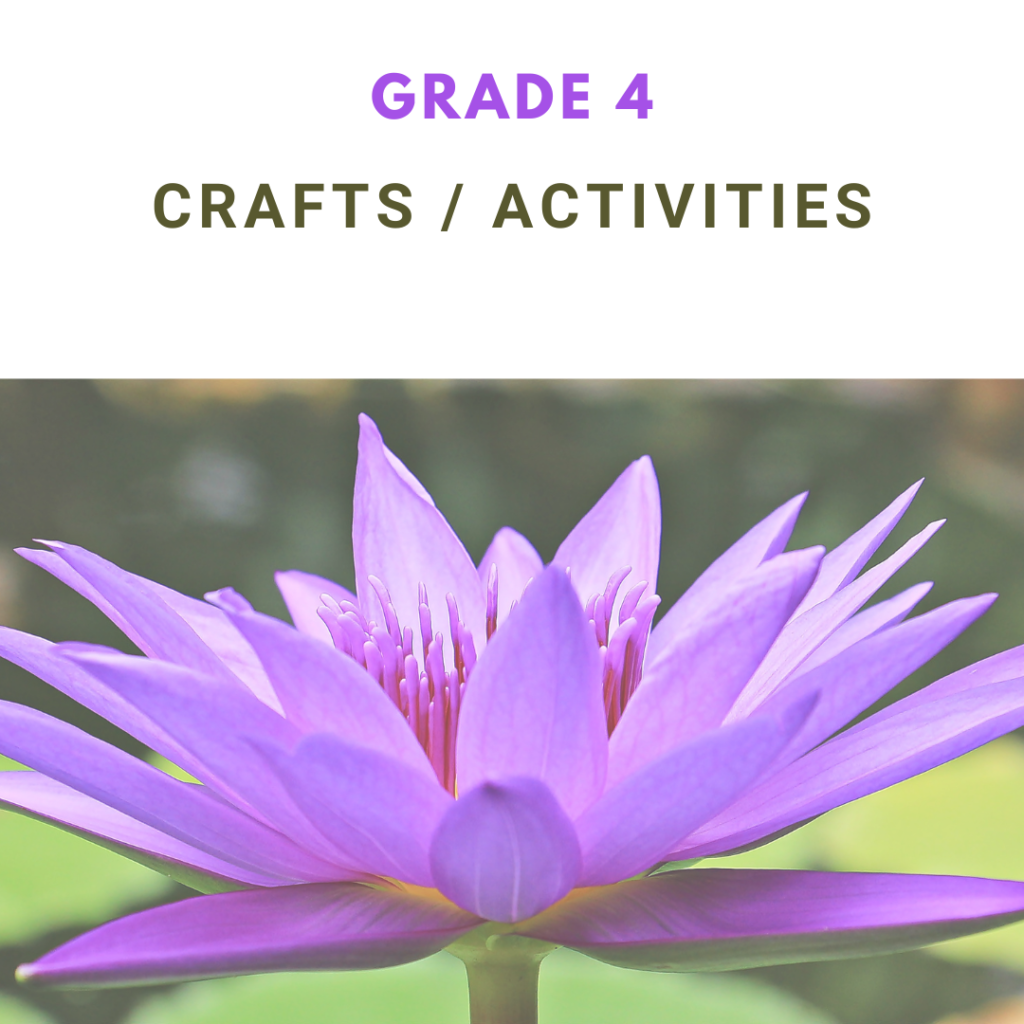
Make a Rangoli (Based on vignette 1)
Rangoli is large, colorful designs created on the floor or ground, using petals from flowers, colored rice and sand, and sometimes dry flour. Usually, the mother and daughters will rise early in the morning, clear the space for the rangoli, outline the design with chalk, and then fill it in with the petals and colored rice and sand they have prepared. Make your own on the floor or use a large piece of cardboard to create.
Plan an event for your community! (Based on vignettes 2, 8, 9, and 10)
Use the workbook below and follow the simple steps by answering the questions. Remember to invite me!
Download the planning workbook

The Light To The World (Based on Vignettes 3, 8, and 10 )
Watch the film ” The Light to the World” and then record your thoughts. This could be on what your actions might be, how you felt, etc.
Draw A Mural (Based on Vignette 4)
Draw a mural with your class on a wall if possible or in class on a long strip of Kraft paper.
Message from the Universal House of Justice (Based on Vignette 5)
Have you read or listened to any letters from The Universal House of Justice (UHJ)? These letters offer powerful insights into the current state of humanity as well as guidance. You can read it here . Share any part of the letter and what you understand from it in a format of your choice: a drawing, a newspaper article, or a poem.
Retell the story of Bahá’u’lláh (Based on Vignette 6)
Plan to re-tell a small fragment of the life of Bahá’u’lláh at a feast or holy day. This can be each child saying one of the points, or drawing an image of each point without having an image of Bahá’u’lláh.
- “Bahá’u’lláh, the Manifestation of God for this Age, was born in Ṭihrán, in a faraway country called Iran,”
- “Ever since He was young, Bahá’u’lláh displayed extraordinary signs and qualities for a child His age.”
- “The multitude of fish followed Him without being able to hurt him,”
- “I don’t know why they hurt Him so much when He was such a good person,”
- “They placed such a heavy chain around His neck” was all the child could add.
Design a house of worship (Based on Vignette 7)
The Bahá’í House of Worship was finished just in time for the bicentenary of the Birth of Bahá’u’lláh. If you had to design a House of Worship what would that look like?
Note that All Bahá’í Houses of Worship are required to have a nine-sided shape (nonagon) and to have nine pathways that lead outward and nine gardens surrounding them.
Other
Dayspring magazine has lots of activities: Download it here
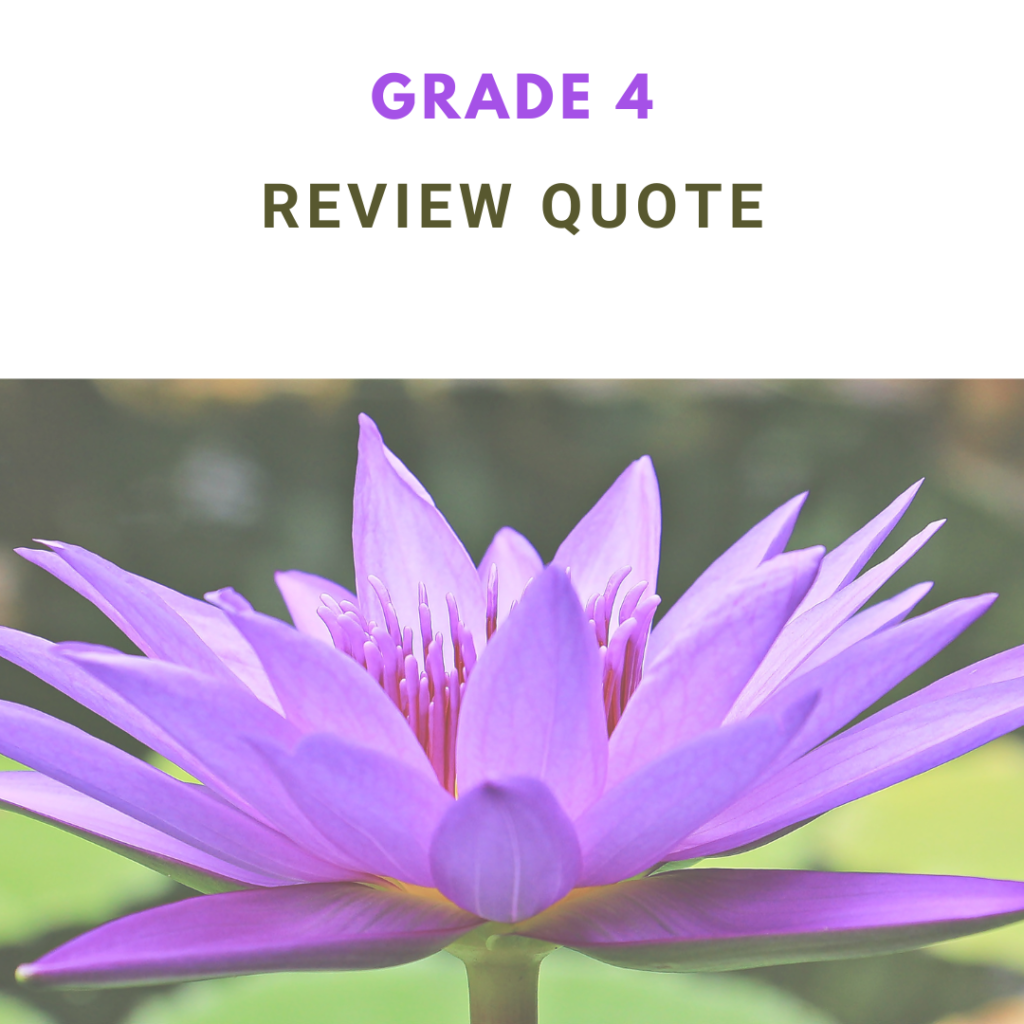
The time foreordained unto the peoples and kindreds of the earth is now come. The promises of God, as recorded in the holy Scriptures, have all been fulfilled.
Gleanings From the Writings of Bahá’u’lláh
Memorize the quote
Click on the photo to download



